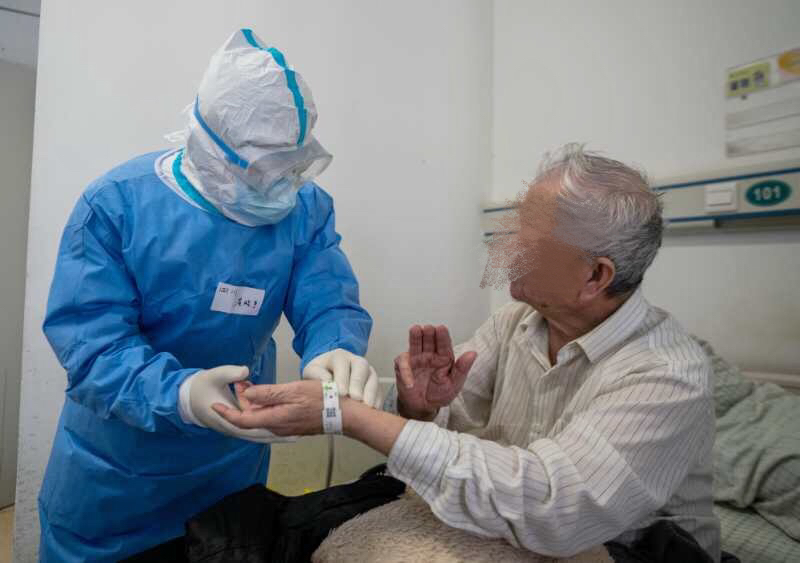Hu with a patient, whose face has been obscured for privacy/photo from Hu Xiaoyu
BY HALEY ZHAO
STAFF WRITER
THE CAPITAL NEWS SERVICE
Dr. Hu Xiaoyu found out through a 2 a.m. phone call in February that he and his medical team were being sent to Wuhan, China, to work with patients suffering from coronavirus. Hu knew the situation there was serious, but he was eager to help.
“I was actually quite excited that I got the call,” Hu said in a phone interview. “This was a once-in-a-life opportunity to be on the frontline.”
Hu, chair of the Department of Infectious Disease at Affiliated Hospital to Chengdu University of TCM, said he quickly realized how severe the outbreak was.
When he got to Wuhan, just seven days before the government ordered a shutdown of the city, Hu said he saw something that gave him chills.
“The only vehicles on the road were for government use or for transporting bodies,” he said.
Although Hu said he thought he and his team were ready to treat patients, they ran into a series of problems when they started at Wuhan Union Hospital.
First was the shortage of the supplies. He thought they had enough full-body protective suits to wear in the red zone, where the most critically ill patients were kept.
“We brought protective suits that were sufficient for over a week,” Hu said. “Those suits were only enough for two days.”
In the red zone, doctors would take turns entering negative-pressure rooms. Hu said it was a very stressful experience, especially for the younger doctors.
“Some people cannot think straight in there,” Hu said. “People can’t breathe or see very well when wearing full protection suit for four to six hours, and there’s also the fear of getting infected.”
Most of the doctors, who came from 35 hospitals in Sichuan, had never worked together and were not familiar with the Wuhan Union Hospital’s charting system. In the first 12 hours they arrived, the team received 128 patients and filled two hospital floors.
“We had all these patients coming in and there’s only one nurse from the Union Hospital who knows how to use its system,” Hu said. “It was a mess at first, and we just had to learn by doing.”
Hu remembered most of the staff slept only about 15 hours total during that hectic first week. The doctors would work all day and have video conferences and consultations at night to share progress and discuss the treatments.
In their first week, the hospital received a group of COVID-19 patients from a retirement community, with average age in their 70s. One of the patients died before receiving treatment.
The patients’ condition deteriorated at a very fast rate. Hu said some patients would walk in looking fine in the beginning, but a week later they could only breathe through ventilators.
“There was a lot of pressure just from seeing all the elderly patients when making the rounds each day,” Hu said. “It was the darkest time of my life.”
Despite all the struggles and pressure, Hu said he and his team managed an over-80-percent recovery rate for the 174 critically ill patients they treated, which came as a surprise to many doctors in the Union Hospital.
Hu is in quarantine right now in Jianyang, Sichuan, after returning from a month in Wuhan, but he and his family are looking forward to reuniting. His youngest children, 2 and 5, will finally see their father again.
Hu said his experience at Wuhan has lingered long after he left. He has spent the last 18 years studying infectious diseases. He remembered watching his mentors fighting SARS in 2002 when he was completing postdoctoral research in Shanghai, and when he was sent to Wuhan, said he thought, “and now it’s my turn.”



